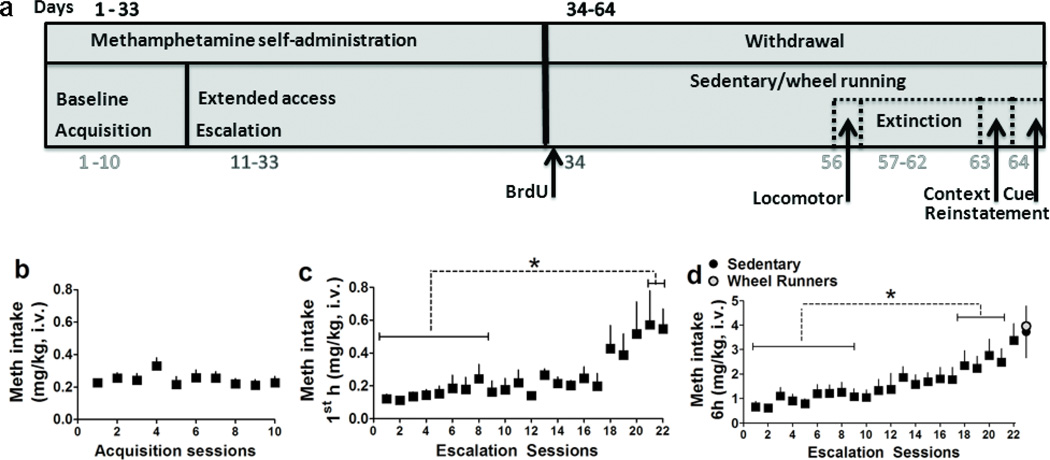Figure 1.
(a) Schematic of behavioral protocol and experimental procedures. Self-administration began with a 10-day acquisition period in which rats were limited to 1h sessions under a fixed ratio 1 (FR1) schedule. Subsequently, rats experienced extended access (6h) sessions under a FR1 schedule. Next, rats were withdrawn from methamphetamine and were given one injection of BrdU on the following day to label progenitors in the hippocampus. After injections rats were placed in home cages equipped with (WR) or without (sedentary) running wheels for 30 days during which methamphetamine was withdrawan. During withdrawal rats extinguished self-administration behavior in a new context and the following day began a within-session context/cue-induced reinstatement paradigm. All animals were killed 60–90 minutes after the last reinstatement session. (b–d) Methamphetamine intake (mg/kg) during acquisition (b) and escalation (c–d) sessions.(c) Amount of methamphetamine consumed during the first hour of the six hour access; (d) amount of methamphetamine consumed over the entire six hour access. At the end of the six hour sessions rats (n = 18) were separated into sedentary or WR groups (n = 9 sedentary group; n = 9 WR group). Data is expressed as mean ± S.E.M. *p<0.05 vs. initial sessions in (c–d).

